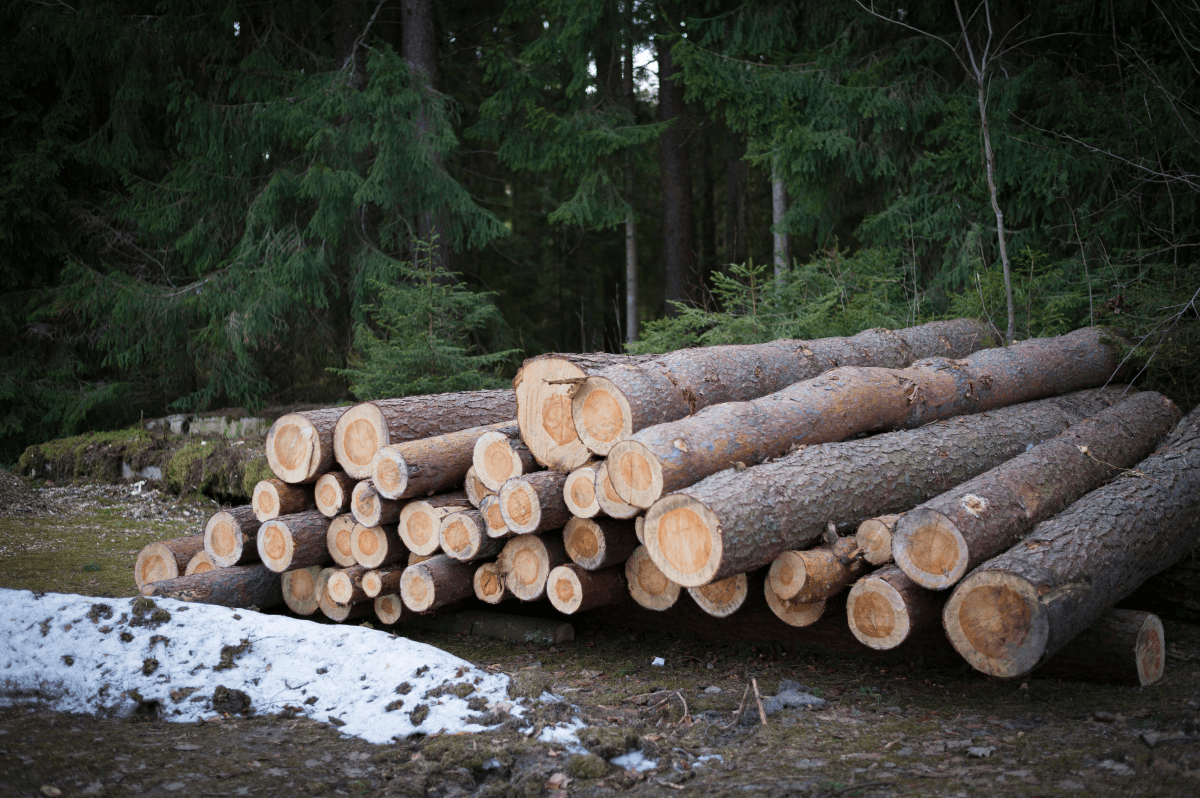Timberland Management Best Practices: Creating a Sustainable System for Your Forested Land
By United Country Real EstateJune 10, 2024

Sustainably managing your timberland requires careful consideration and a wealth of knowledge. Learn all the tips and tricks here.
Harvesting Timber
A harvest of timberland requires careful planning and a
detailed knowledge of your land and its commodities. Depending on whether you
plan to make commercial use of timber through logging the land or preserving
the environment and using it for more recreational pursuits. Either method
calls for regenerative practices to keep the forested land alive. The method to
effectively regenerate the trees is determined by the tree species, current
timber market, available logging equipment and much more. Take proper
precautions to learn
how to protect your timberland investment and make the most out of your
property.
Selective Cutting vs. Clear Cutting
Logging is a crucial part of timberland maintenance. Selective Cutting, be it single
trees or a group, mimics the natural order of the forest with mature trees
being felled routinely. The removal of some of the strongest trees in your
timberland may seem counterproductive, this is a great way to prevent fires,
offer more growth for seeds and smaller trees and it provides more sunlight to
the ecosystem. Clear Cutting is the method of cutting down large sections of
timberland. This often requires burning slash, the remaining trees and plants,
and can disrupt the ecosystem while also creating room for development and
offering income.
Rotation Periods
Optimizing rotation periods is the process of strategically
harvesting timber based on the stumpage
and when the timber will be the most valuable. With planned intervals between
harvests, this allows the forest to thrive while still making money off your
commodity. Finding the maximum sustainable yield, the highest amount of timber
than can be harvested without depleting the resources itself, is the first step
to securing healthy rotation.
Reduced Impact Logging (RLI)
Reduced impact logging (RLI) is one of the most
environmentally-focused harvesting methods. This practice aims to minimize the
damage caused to forests during the harvest by planning the layout of the
logging roads to reduce soil erosion, using cable systems to transport logs and
reducing the number of “lost” logs.
Timber Maintenance
Habitat Preservation
Producing income through timber harvesting may be your
primary reason to own the land, but hunting opportunities often arise at these
properties, granting further use of the tract. Wildlife, such as mule or
whitetail deer, hogs, bear, waterfowl and other game, often inhabit rural
timberland, but changes to their ecosystem can cause huge rifts in lifecycles. As
any good outdoorsmen knows, the food pyramid in any environment is a delicate
balance that should be taken seriously and considered thoughtfully. The best
way to care for these creatures and extend their lineage is to care for their
habitat.
Soil Health
Assessing the health and quality of the soil on your
timberland is one of the first steps one should do when acquiring the land. How
much organic matter is in the soil effects the fertility, structure, how it
keeps nutrients and erosion. Conduct
a test to discover the chemical makeup of the soil to identify the pH and
carbon levels, as well as so much more.
Water Quality
Healthy forests and water quality influence each other more
than any other aspects. Forests catch pollutants in water, acting as a filter
while absorbing the nutrients. They also store water in their roots, regulating
the rain and runoff by reducing flood likelihood and releasing water vapors.
Forest Disease & Drought
Trees, like every living thing, are susceptible to disease
and other issues, emphasizing the importance of properly maintaining your
timberland. Disease, or even drought, can cause irreparable damage to your
timber. Keep an eye out for leaf wilting or scorching during the hotter months
to ensure your timber is receiving the appropriate amount of water. Higher
temperatures also leave your timber susceptible to pests and diseases. These
issues depend
on the species and region, so conduct research or consult an expert to assess
which disease your tree might have.
Pests & Invasive Species
Pests are one of the ultimate crop-killing causes. Survey
your land and timber frequently to stay on top of this issue. Many beetle species,
some moths, cicadas and other insects can damage your trees quickly, as
well as whichever invasive species have found their way into your area. Take
proper precautions that best suit your needs to rid your land of them.
Certification & Education
Sustainability organizations that prioritize preserving
biodiversity, protecting endangered species and saving forest systems. The Forest Stewardship Council is a prime example of
a U.S.-based organization that exceeds at this mission. Get certified as a forest manager or
one of the other many certification classes under their name and benefit from
the additional market access and align yourself with a trusted source. The Sustainable Forestry Initiative is another
environmental resourced based in North America that hosts conferences along
with their illustrious certifications. Review their sustainability standards
and conservation projects to see how you can get involved or adapt these
lessons to your land.
Sources:
